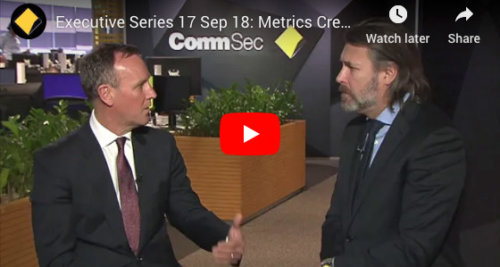The investment case for Australian private debt
Inflationary pressures have been building globally for the past year, as seen in higher food, energy and transport costs. This is most evident in the US where February headline inflation reading rose to an annualised rate of 7.9%, the highest in 40 years.
The pickup in prices has been driven by wide-ranging factors including massive pandemic-related stimulus, supply chain bottlenecks, soaring energy costs and higher wages as the labour market comes close to full capacity.
In March, the US Federal Reserve lifted its target for official interest rates by a quarter of a point to between 0.25% and 0.5% to combat accelerating inflation. It was the first rise in rates since 2018 and comes as markets are pricing in multiple increases this year to return rates to a “neutral” settings of 2.5%. In the UK, the Bank of England has already raised rates twice – to 0.5% – and more are expected with inflation running at 7%.
In March, the Reserve Bank of Australia held rates at the record low of 0.1% and said it was prepared to be patient in assessing the various factors influencing inflation before raising rates. Governor Philip Lowe has said he wants to see inflation sustainably within the 2-3% target band and stronger wages growth before acting. At the end of 2021 inflation was running at 3.5% – which is above the target band, while unemployment fell to an equal record low 4% in February. Policy makers expect sustained higher employment to put pressure on wages, although the impact is delayed by multi-year enterprise agreements in many industries. Sensing a shift in conditions, private lenders have been raising fixed rates for longer-term loans.
SO WHY SHOULD INVESTORS KEEP AN EYE ON INFLATION?
Inflation poses a threat to investors because it chips away at the purchasing power of savings and investment returns. It can be particularly damaging to returns on fixed income investments. Because the interest rate on most bonds and other fixed income investments is fixed until maturity, investors risk missing out on the income boost from higher interest rates as the global economy recovers. As inflation concerns push up market interest rates, the capital value of the bonds in an investment portfolio can also decline because the present value of those fixed interest payments declines.
Equity markets can also be more volatile during inflationary periods, with growth stocks retreating. Tech stocks are particularly vulnerable to higher interest rates which erode the value of future cash flows. Many big tech companies expect a larger proportion of their profits to be delayed out into the future relative to the expectations of value companies. So, how can investors protect their portfolios and their income in the current environment?
While interest rates remain low at present, and inflation remains an emerging risk, now is the time for investors to be proactive in reviewing their portfolio to ensure their capital is protected and they are well positioned to take advantage of rising rates.
Here are several reasons to look beyond traditional asset classes and consider private markets, specifically, private debt.
1. THE FLOATING RATE STRUCTURE OF AUSTRALIAN PRIVATE DEBT PROTECTS AGAINST INFLATION.
Private debt in the form of corporate loans offer protection against inflation because they earn their returns from interest that is generally charged at a floating rate. The interest on Australian corporate loans is usually structured as an additional margin over the benchmark Bank Bill Swap Rate (BBSW), which is correlated with the RBA Cash Rate.
In this way, the returns on corporate loans keep pace with inflation, helping investors to maintain their purchasing power even as prices of goods and services rise.
2. IF INTEREST RATES RISE, YOUR RETURNS SHOULD RISE TOO.
The floating rate nature of corporate loans means that you won’t miss out on higher returns if official interest rates rise.
Markets are pricing the likelihood of multiple increases in official interest rates in many countries through 2022 as central banks try to control runaway inflation. Along with an end to quantitative easing via central bank bond buying, markets are facing an end to easy money policies and the decades-long run of falling interest rates.
The BBSW, to which most corporate loan returns are linked, is essentially the rate at which Australia’s major banks are willing to lend short term money to other banks. It reflects not only the current level of the RBA cash rate but also the expectations the banks have of future cash rate settings.
In essence, the linking of corporate loan interest to the BBSW means that if official interest rates are on the rise, so too will be the returns you are receiving on the loans you are invested in.
3. CORPORATE LOANS CAN DELIVER RELIABLE INCOME EVEN WHEN MARKETS ARE VOLATILE.
The Australian corporate loan asset class has proven its ability to deliver stable income to investors even when financial markets are at their most volatile.
Interest rates on corporate loans are received from borrowers at specified intervals under the binding terms of their loan contract. This contrasts with dividends, which are paid to equity holders at the company’s discretion.
If inflation continues to create movement in equity and bond markets, corporate loans in a well-managed fund have the potential to deliver uninterrupted and consistent income to investors – especially important for investors relying on regular income to maintain their lifestyle.
4. THE RISK OF CAPITAL LOSS IS LOW.
Many shareholders were hurt during the pandemic-related volatility of 2020 as share prices fell and companies rushed to raise capital, diluting the value for existing shareholders.
Fears of interest rate rises combined with increasing geo-political risks caused heavy share market sell-offs in January and rising public market volatility.
Private debt invested in Australian corporates is a lower risk investment than equity because Australian corporate insolvency laws give priority to the interests of creditors in claims over the assets of a business. Loans also enjoy covenants and controls that provide the lender with mechanisms to monitor risk and act proactively to protect value if credit quality or financial performance of the company was to deteriorate.
In a private market, lenders directly negotiate with borrowers, and therefore have greater influence on terms and conditions. Covenants are negotiated and provide protection and an early warning of changing risks.
As a result of the protections in place combined with the additional security held over the company, the corporate loan loss rates for Australian companies have been very low for many years.
5. THE ASSET CLASS IS DELIVERING ATTRACTIVE RETURNS TO INVESTORS RIGHT NOW, EVEN WHEN RATES ARE LOW.
Interest rates have been falling since the 1990s, supporting businesses and the economy with a lower cost of capital and an increased appetite for risk assets. While it has driven gains in company valuations, the prospect of that long-term trend reversing has implications both for the earnings of companies and their share prices.
On the other hand, private debt is already delivering attractive returns to investors because it is typically provided at a margin above official interest rates. This floating rate provides a hedge against rising inflation and interest rates for investors who fund private credit. So, as official interest rates rise, returns to investors in well-managed private debt should rise.
There is growing evidence that interest rates around the world will increase. What is less certain is by how much and how soon. Repeated monthly readings show consumer prices in the US at a multi-decade high and point to rising interest rates. But authorities will want to balance that inflation risk against the risk that too many rate rises could hurt economic growth, meaning rates may not rise as far or as fast as some expect.
The same equation applies in Australia as the country learns to live with COVID-19. Both the Reserve Bank of Australia and the Federal Government have expressed an ambition for unemployment to fall below 4% for the first time since 1974, which may indicate they are prepared to tolerate higher inflation and lower rates for some time.
The good news is private debt can provide attractive risk-adjusted returns even if interest rates stay low.
ACCESSING THE MARKET
Corporate loans are not an asset class that investors can easily access directly, and therefore need to be accessed via a manager with scale and expertise in this market. When accessing corporate loan investments through an ASX-listed structure, investors enjoy the premium income distributions associated with this asset class, without having to lock up capital for years and can actively transact in units via the ASX.
While rates are low, and income is hard to come by, a well-managed private debt fund can be a great source of regular monthly income and provide attractive risk-adjusted returns compared to traditional investment options – with less volatility than equity markets and if interest rates do start to rise, you’ll be protected against inflation as you watch your total income rise.
Other News
Metrics Innovate Reconciliation Action Plan
We are proud to share our second Reconciliation Action Plan (RAP), reaffirming our commitment to truth, healing and unity. We…
Metrics response to ASIC’s report on Advancing Australia’s Evolving Capital Markets
Attributable to Metrics Group CEO and Managing Partner, Andrew Lockhart: Metrics Credit Partners (“Metrics”) welcomes ASIC’s roadmap to promote strong,…
INSIGHTS
MCP Income Opportunities Trust (MOT) lists on ASX
Sydney, 29 April 2019: The Trust Company (RE Services) Limited (ABN 45 003 278 831) (Responsible Entity) is the responsible…
MCP Master Income Trust wins Lonsec Listed Fund Award
The award came a year after MXT was listed on the Australian Securities Exchange






